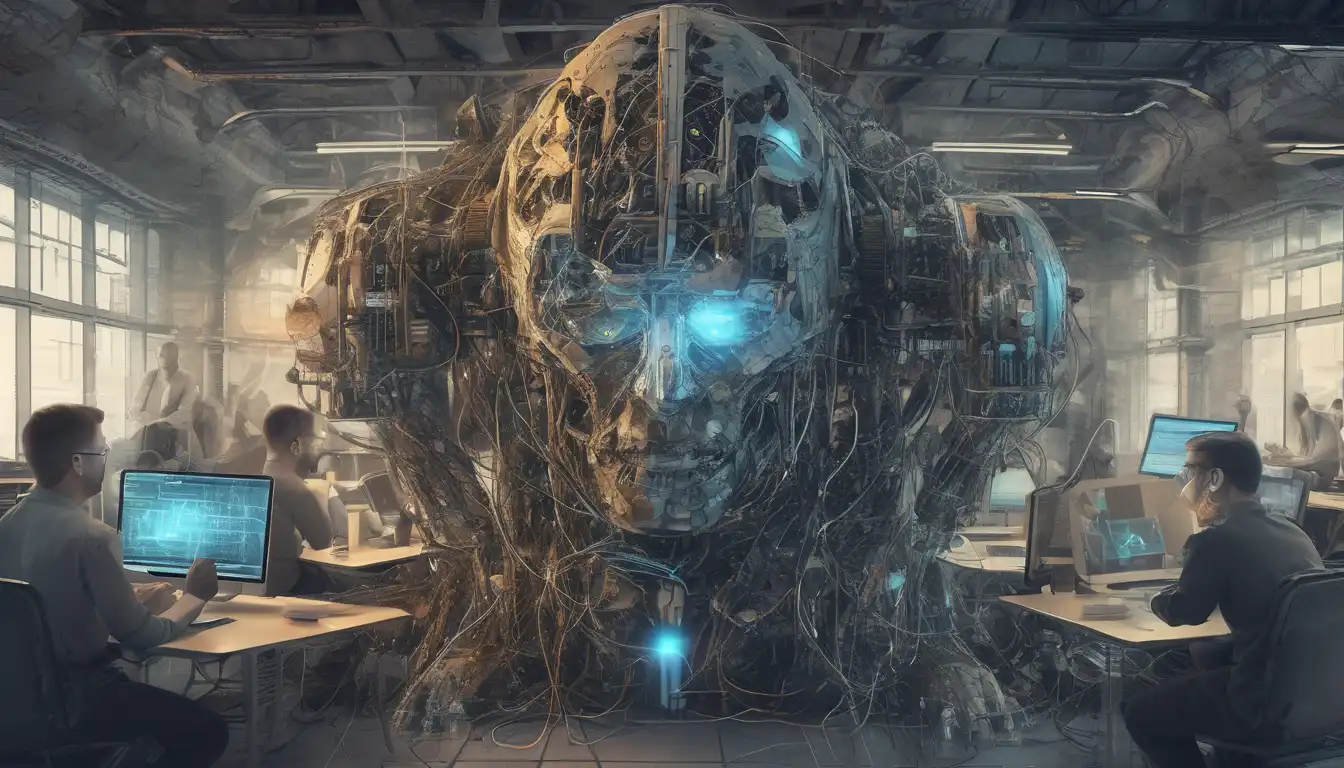Understanding the Fundamental Differences
In the rapidly evolving world of technology, two distinct approaches to problem-solving have emerged: machine learning and traditional programming. While both aim to create solutions through code, their methodologies, applications, and underlying philosophies differ significantly. Traditional programming follows explicit instructions, where developers write rules and logic to solve specific problems. In contrast, machine learning enables computers to learn patterns from data and make decisions without being explicitly programmed for every scenario.
What is Traditional Programming?
Traditional programming, also known as rule-based programming, has been the foundation of software development for decades. In this approach, programmers write explicit instructions that define how a system should behave under various conditions. The computer follows these predetermined rules exactly as written, making traditional programming highly predictable and deterministic.
Key characteristics of traditional programming include:
- Explicit rule definition by developers
- Deterministic outcomes based on input
- Clear cause-and-effect relationships
- Well-defined problem domains
- Manual debugging and optimization
Traditional programming excels in scenarios where problems are well-understood and rules can be clearly defined. Examples include accounting software, inventory management systems, and basic web applications where the logic remains relatively static.
The Rise of Machine Learning
Machine learning represents a paradigm shift in how we approach problem-solving. Instead of writing explicit rules, machine learning algorithms learn patterns from data and make predictions or decisions based on that learning. This approach is particularly valuable for problems where writing explicit rules would be impractical or impossible.
Machine learning systems typically involve three main components:
- Training data that represents the problem domain
- Algorithms that learn patterns from the data
- Models that make predictions or decisions
This approach has revolutionized fields such as image recognition, natural language processing, and recommendation systems. For instance, instead of writing rules to identify cats in photos, a machine learning model can learn what cats look like by analyzing thousands of cat images.
Key Differences Between the Approaches
Problem-Solving Methodology
The fundamental difference lies in how each approach solves problems. Traditional programming requires human experts to analyze a problem and encode their knowledge into rules. Machine learning, however, allows the system to discover patterns and relationships autonomously from data.
In traditional programming, if the problem changes, developers must manually update the rules. Machine learning models can adapt to new patterns in the data through retraining, making them more flexible in dynamic environments.
Data Dependency
Traditional programming relies heavily on human expertise and logical reasoning. The quality of the solution depends on the programmer's understanding of the problem domain. Machine learning, conversely, depends on the quality and quantity of training data. Poor data leads to poor models, regardless of the algorithm's sophistication.
Scalability and Maintenance
Traditional systems become increasingly complex as rule sets grow, making maintenance challenging. Machine learning models can handle complexity more gracefully by learning from data patterns. However, they require continuous monitoring and retraining to maintain performance as data distributions change over time.
When to Use Each Approach
Traditional Programming Ideal Scenarios
Traditional programming remains the better choice for:
- Problems with clear, deterministic rules
- Systems requiring exact precision and predictability
- Applications where transparency and explainability are critical
- Domains with limited or no historical data
- Safety-critical systems where behavior must be guaranteed
Examples include financial transaction processing, air traffic control systems, and mathematical computation software.
Machine Learning Preferred Applications
Machine learning shines in situations where:
- Patterns are too complex for humans to encode explicitly
- The problem involves perception or recognition tasks
- Large amounts of relevant data are available
- Adaptability to changing conditions is required
- Personalization and recommendation are needed
Common applications include spam detection, fraud prevention, voice assistants, and autonomous vehicles.
Integration and Hybrid Approaches
Many modern systems combine both approaches to leverage their respective strengths. For example, a recommendation system might use machine learning to predict user preferences while employing traditional programming for business rules and safety checks.
Hybrid approaches allow organizations to:
- Maintain control over critical business logic
- Leverage machine learning for pattern recognition
- Ensure system reliability through traditional programming
- Adapt to changing user behavior through learning capabilities
This integration represents the future of software development, where intelligent systems combine the predictability of traditional programming with the adaptability of machine learning.
Skills and Tools Required
Traditional Programming Skills
Traditional programmers need strong skills in:
- Algorithm design and analysis
- Data structures and optimization
- Software architecture and design patterns
- Debugging and testing methodologies
- Specific programming languages and frameworks
Machine Learning Expertise
Machine learning practitioners require additional skills in:
- Statistics and probability theory
- Data preprocessing and feature engineering
- Model selection and evaluation
- Deep learning frameworks and libraries
- Data visualization and interpretation
Future Trends and Evolution
The boundary between traditional programming and machine learning continues to blur. Emerging trends include:
- AutoML systems that automate machine learning workflow
- Explainable AI that makes machine learning decisions more transparent
- Low-code platforms that combine both approaches
- Reinforcement learning for complex decision-making
As artificial intelligence continues to advance, the distinction between programmed rules and learned behavior will become increasingly nuanced. The future likely holds more sophisticated hybrid systems that seamlessly integrate both methodologies.
Conclusion
Both machine learning and traditional programming have their distinct places in the technology landscape. Traditional programming provides reliability, transparency, and precision for well-defined problems, while machine learning offers adaptability, pattern recognition, and scalability for complex, data-rich domains. The choice between them depends on the specific problem, available data, and required outcomes. As technology evolves, the most successful organizations will be those that understand when to apply each approach and how to effectively combine them for optimal results.
Understanding these differences is crucial for developers, business leaders, and technology enthusiasts alike. By recognizing the strengths and limitations of each approach, we can make informed decisions about which methodology best suits our specific needs and challenges in an increasingly digital world.
